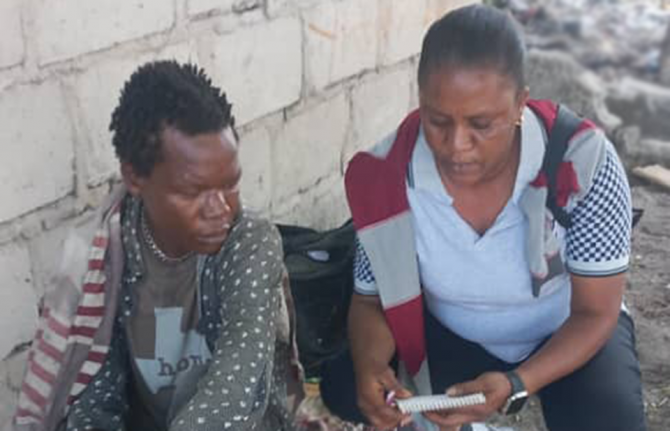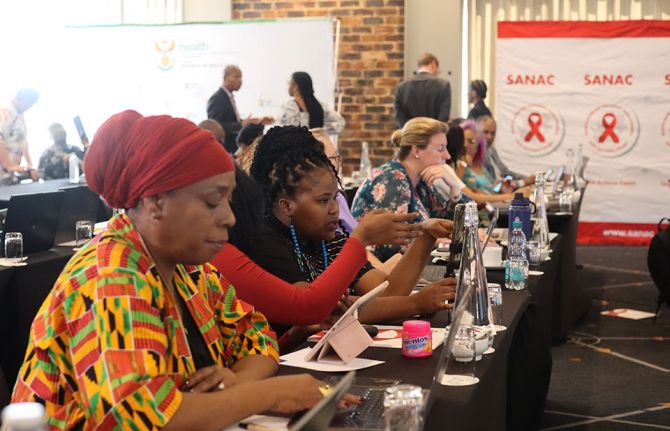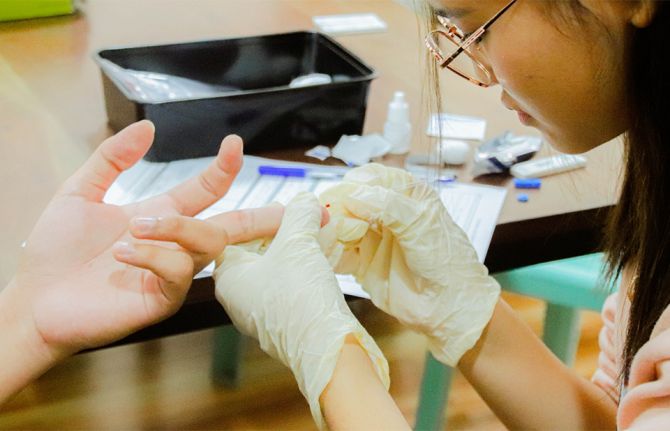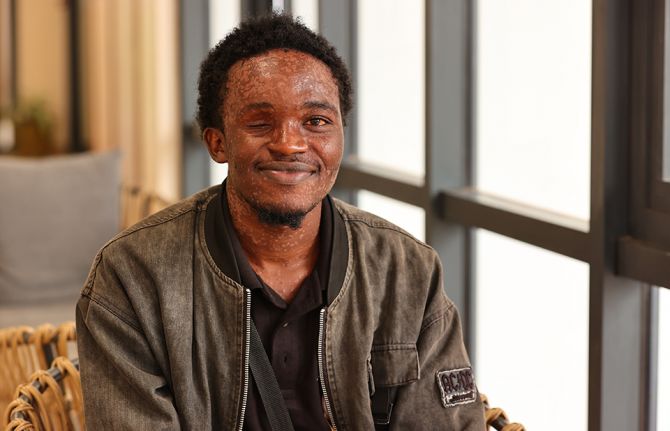

Feature Story
US foreign aid cuts puts the lives of people who use drugs at risk
05 мая 2025
05 мая 2025 05 мая 2025Godfrey Swai is shaken. Since the end of January, the US aid funding cuts have meant that he can only afford for his staff to work a couple of hours twice a week compared to a full five days.
As the Executive Director of an organization called Methadone Family Against Drug Abuse based in Tanzania he has had to scramble. “Despite clinics being partly opened, our outreach in hotspots came to a halt,” he said. “The community is scared.”
In many countries, like Uganda, centres distributing opioid agonist maintenance therapy (OAMT), also known as medically assisted treatment, closed for a month. OAMT is often prescribed as oral medication to alleviate withdrawal symptoms and reduce injecting drug use, which in turn lowers the risk of acquiring HIV. In 2022, the risk of acquiring HIV was 14 times higher for people who inject drugs than for people in the overall adult population.
“We know that disruption to OAMT is a threat to life,” said Catherine Cook, Sustainable Financing Lead at Harm Reduction International (HRI).
Banza Omary Banza, Director of Community Peers for Health and Environment Organization in Tanzania, agrees. “Fearing a stock out of methadone–the OAMT medicine–we have witnessed people returning to heroin use and hitting the black market,” he said.
A setback that has a myriad of repercussions.
According to a recently published survey by International Network of People who Use Drugs (INPUD) there has been large-scale suspension of outreach and harm reduction programmes, including needle and syringe distribution, HIV and hepatitis C testing, overdose prevention and legal support services.
“The hardest hit has really been the peer-led outreach,” said Aditia Taslim, Advocacy lead at INPUD. “Three months later no alternative solutions have been put in place. It’s like we are being erased from the HIV response.”
For harm reduction advocates this crisis isn't just financial, it's profoundly human.
“Peers and peer outreach have been the backbone of the harm reduction response," said Juma Kwame, Director of Tanzania Network of People who Use Drugs (TANPUD). “Without people seeking out their peers you don’t have linkages to treatment to health services or to recovery.”
Team leader at a network of women who use drugs in Dar es Salaam, Grace Mbalawa, said that most people living with HIV who use drugs have little income or a stable home, so the loss of support programmes has upended their lives.
“They no longer have a safe space and many are stretching out their HIV treatment by skipping days in case they can no longer get their medicine,” she said. People living with HIV must take daily treatment to stay healthy and suppress the virus. In addition, when the viral loads of people living with HIV are suppressed, sexual transmission of HIV does not occur.
International donor funding comprised 67% of total harm reduction funding in 2022. Most of the money went towards HIV prevention programmes for people who inject drugs. The US President’s Emergency Plan for AIDS Relief (PEPFAR), a decades-long initiative, supported OAMT to 27 000 people in seven countries (India, Kenya, Kyrgyzstan, South Africa, Tajikistan, Tanzania and Uganda). In many cases these were and are the only services available. They also supported harm reduction programmes in Mozambique, Myanmar and Kazakhstan.
Many fear the loss of funding threatens to undermine human rights and marginalize communities already battling stigma and years of neglect with women bearing a big portion of the impact.
“One in three people who use drugs are women but women only account for one in five people accessing services due to the stigma of being a woman using drugs,” said Ms Cook from HRI. “They risk having to admit drug use and face stigma, arrest, losing custody of their children or even violence from the wider community.” Any services tailored to women like the one Ms Mbalawa works for are key as are all peer-led services.
Ms Cook is concerned that if funding for communities and civil society support dries out, the entire harm reduction response may collapse. INPUD also warns that without immediate and strategic intervention, the world could witness a resurgence of HIV, hepatitis C, and overdose epidemics.
UNAIDS, UNODC and partners have been working with governments to encourage increasing domestic funding and mapping out sustainability plans. Central to these include having organisations led by people from the community participating as well as moving funds away from punitive approaches like criminalising drug use to reduce stigma, and inequalities.
“As countries look at new models for how to integrate specific HIV services tailored to serve the needs of people living with HIV or at risk of HIV, including people who use drugs, into general health services, this must include the integration of harm reduction services ” said Suki Beavers, UNAIDS Director of Equality and Rights for All. “And peer-led outreach is part of that equation.”
Mr Kwame stressed, “We need our voice to be heard so that people who inject drugs are part of the health agenda, and our needs are met.”
Related resources
Related
 South Africa charts a new frontier by rolling out a twice-yearly injection which is almost 100% effective in preventing HIV
South Africa charts a new frontier by rolling out a twice-yearly injection which is almost 100% effective in preventing HIV

24 октября 2025 года.
 Funding cuts undermine community-led innovations in the Philippines
Funding cuts undermine community-led innovations in the Philippines

21 июля 2025 года.
 A lifeline interrupted in Uganda— why community health systems matter
A lifeline interrupted in Uganda— why community health systems matter

18 июля 2025 года.
